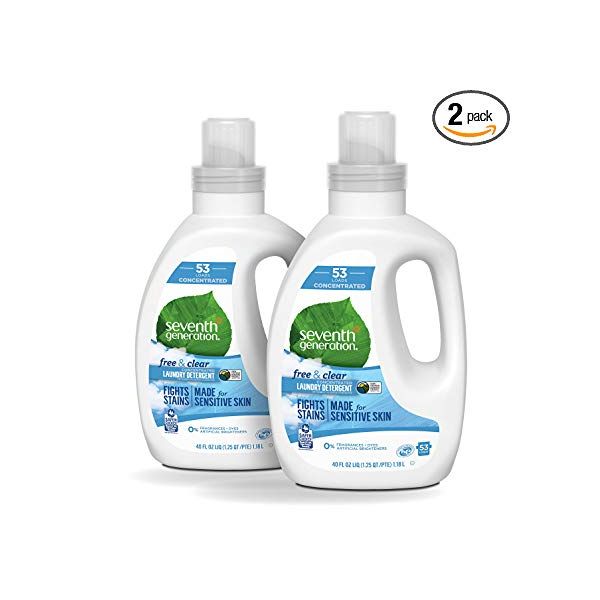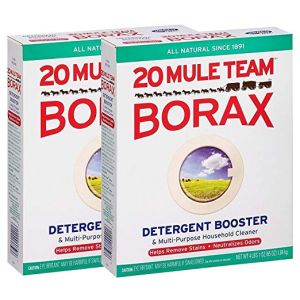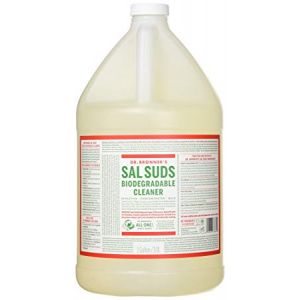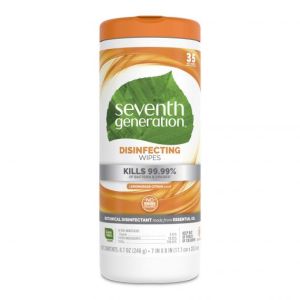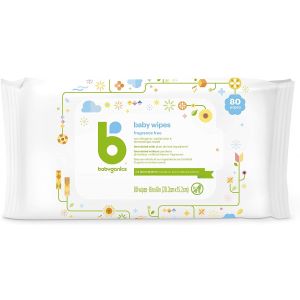- Pros:
- Hypoallergenic, dermatologist-tested, concentrated laundry detergent for sensitive skin
- 96% Plant-based ingredients and triple enzyme formula fight stubborn stains
- Powerful formula washes 53 medium loads in standard or high efficiency (HE) machines
- EPA Safer Choice Certified Product
- USDA certified biobased product 97%
- For all water temperatures, cold or hot
- Designed with safety in mind
- Made without fragrances and tested for skin irritation and skin sensitization
- Cruelty-free
- Gluten-free
- Phosphate-free
- Free of, dyes, and artificial brighteners
Ingredients Concern: Sodium Hydroxide, benzisothiazolinone, methylisothiazolinone
Cons: Keep out of reach of children, If product gets into eyes, flush thoroughly with water, If swallowed, drink plenty of water
Seventh Generation is a mission based company which wants to be a good force in the world. They even formed a Social Mission Board which meets with the purpose of reducing their carbon footprint. They claim that their purchase from Unilever has not changed their commitment to making products with zero waste packaging, 100% reused, recycled or biodegradeable. Their admirable goal is also to be run 100% by renewable energy. As for the quality of their products, they promise to use research, science, and passion to make products that work great. They use plant based ingredients in their products to get cleaning done in the right way.
Laurteth is commonly used in soaps, shampoos, cleansing liquid, and body wash, among others [1].
According to research, Sodium Lauryl Sulfate (SLS) is a safe cleaning agent that is frequently added to household cleaning products [3].
Sodium citrate is frequently added to cleaning products [4].
Laundry detergent (Clothes, fabrics) [1-4]
Laureth gained popularity after the introduction of sodium lauryl sulfate (SLS). Laureth has similar properties as SLS, but is less irritating for some people [1]. Plant-derived surfactants such as laureth, act as permeation enhancers, which is a property that increases the wetting and spreading properties of detergents [2].
Sodium Lauryl Sulfate (SLS) is an anionic surfactant that is also known as sodium laurilsulfate or sodium dodecyl sulfate. It is commonly used as an emulsifying cleaning agent in spray cleaners, laundry detergents, and dishwasher detergents [3]. In addition, SLS is nonvolatile and water-soluble [3].
Sodium citrate is widely used in phosphate-free cleansers and liquid detergents [4]. Its main constituent is citric acid, which is biodegradable and weakly toxic, making it a favorable cleaning agent.
Key Ingredients: Laureth-6 (plant-derived cleaning agent), sodium lauryl sulfate (plant-derived cleaning agent), sodium citrate (plant-derived water softener) [% were not listed]
All Ingredients: water, laureth-6 (plant-derived cleaning agent), sodium lauryl sulfate (plant-derived cleaning agent), sodium citrate (plant-derived water softener), glycerin (plant-derived enzyme stabilizer), sodium chloride (mineral-based viscosity modifier), oleic acid (plant-derived anti-foaming agent), sodium hydroxide (mineral-based pH adjuster), calcium chloride (mineral-based enzyme stabilizer), citric acid (plant-derived pH adjuster), protease, amylase, and mannanase (plant-derived enzyme blend soil removers), and benzisothiazolinone and methylisothiazolinone (synthetic preservatives)
HOW TO USE: This laundry detergent is designed to produce the best results when measured and used according to these easy steps:
SORT: Follow garment care label instructions.
PRETREAT: Pour laundry detergent directly on stained fabric, rub gently and soak before washing clothes.
MEASURE: 50 and 100 fl oz caps: Standard and HE Machines: Line 2 (1.5 fl oz / 44mL) for medium loads; to line 4 (2.2 fl oz / 65 mL) for heavily soiled or larger loads. 150 fl oz caps: Standard and HE Machines: Line 1 (1.5 fl oz / 44mL) for medium loads; to line 2 (2.2 fl oz / 65 mL) for heavily soiled or larger loads.
POUR: Use dispenser for HE washers. For standard washers, begin to fill machine with water, add laundry detergent, then add clothes. The 50 oz laundry detergent bottle contains 33 loads as measured to Line 1 in the cap, 100 fl oz contains 66 loads. The 150 oz laundry detergent bottle contains 99 loads as measured to Line 1 in the cap. Please recycle the laundry detergent bottle when you are done.
These statements have not been evaluated by the FDA. These products are not intended to diagnose, treat, cure or prevent any disease.
1. Sharkawy GF. Awareness of Sodium Lauryl Sulfate & Sodium Laureth Sulfate Health Hazards among Users. Journal of American Science 2011;7(4):535-541
2. Legen I, Salobir M, Kerc J. Comparison of different intestinal epithelia as models for absorption enhancement studies. Int J Pharm. 2005;291(1-2):183-8.
3. Bondi CA, Marks JL, et al. Human and Environmental Toxicity of Sodium Lauryl Sulfate (SLS): Evidence for Safe Use in Household Cleaning Products. Environ Health Insights. 2015 Nov 17;9:27-32.
4. National Center for Biotechnology Information. PubChem Database. Sodium citrate, CID=6224. Retrieved from https://pubchem.ncbi.nlm.nih.gov/compound/Sodium-citrate

